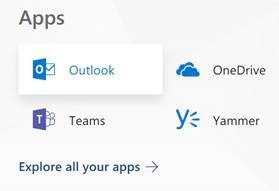Tip o' the Week 422 – Freshening Outlook.com
Microsoft has been the butt of jokes in the past when it comes to branding As world+dog runs from discrete and perpetually licensed software, to SaaS applications delivered via a variety of clients, web apps and the like, Outlook has grown into a whole family of products, not altogether without confusion. First, there’s Outlook the app that’s part of Office. That’s Office, the application suite, which can trace its roots back to 1990. There’s also a version of Outlook that’s delivered via Click2Run technology (itself rooted in App-V, formerly known as Softgrid) , generally in conjunction with an Office 365 subscription.
Now, if you buy a business version of Office 365, you may or may not get the rights to use Outlook the desktop application, and you will have a web app called Outlook which is running from the Office 365 back end based on Exchange Server. If you buy a consumer version of Office 365 – Home or Personal – you’ll have email called Outlook.com, delivered to you by the same platform as the Hotmail successor but known as “Premium” and therefore without ads and with more capacity, and you may get the Outlook desktop application to use with it. Do you follow?
And returning to Outlook on the Web, ie the version of Outlook you get in your browser when you’re on a commercial version of Office 365, it’s likely that the tailored versions for mobile phones will be retired soon, and users will be pushed to use the Outlook mobile apps for iOS or Android instead. |


